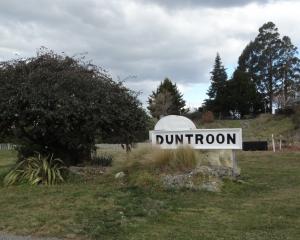
Already this year, 31 of 85 chicks hatched at the Katiki Point and nearby Okahau Point colonies have died. With a couple of weeks left when the chicks were still vulnerable, Penguin Rescue manager Rosalie Goldsworthy said she was worried about the future of the species on the mainland.
Avian diphtheria had been responsible for widespread deaths in Otago yellow-eyed penguins since 1999 and the labour-intensive administration of antibiotics remained "the best technology currently available".
"With only 200 breeding pairs again this year, we need to be doing something to try to save the species.
"Antibiotics does save diphtheria chicks. The problem is you have to treat them five times, you have to follow antibiotics protocol, that’s the challenge. It’s quite labour-intensive — you can’t just pop in and see the chick is sick — if you don’t treat it, it dies."
She said chicks were most vulnerable in the first three weeks, "which is now".
Last year, 70 chicks hatched at Moeraki and 32, or 46%, of chicks were treated; 25, or 78%, of those birds survived.
The intervention was more or less successful last year, Mrs Goldsworthy said, as mortality rates for the birds were similar to those that were not treated last year.
And this year had started promisingly: 85 chicks hatched from 47 breeding pairs was "great". But there could be more deaths to come and the deaths this year had already been "terrible".
Since the beginning of this month, Mrs Goldsworthy had done a full check of every nest every second day, and the "in-between days" she administered the antibiotics to sick chicks.
Department of Conservation vet Kate McInnes said work to date on the disease, which causes lesions in chicks’ mouths and makes eating and breathing difficult, had provided "more questions than answers".
In 2014, working with the Ministry of Primary Industries, she had hoped to discover a "magic bullet", but this had not happened.
Yellow-eyed Penguin Trust general manager Sue Murray said teams in the field had reported "a mild sign of diphtheria in a couple of chicks".
But because the egg-laying of the more southern colonies of the penguins had come later this year, it would continue to be a "waiting game" for the trust, which was "on alert" and would continue to monitor the birds regularly.
● On Otago Peninsula, Penguin Place co-owner Lisa King said three yellow-eyed penguin chicks on the property had died in the past six days.
The birds were sent away for autopsies.
"I don’t know what they’ve died from until the results come through."












